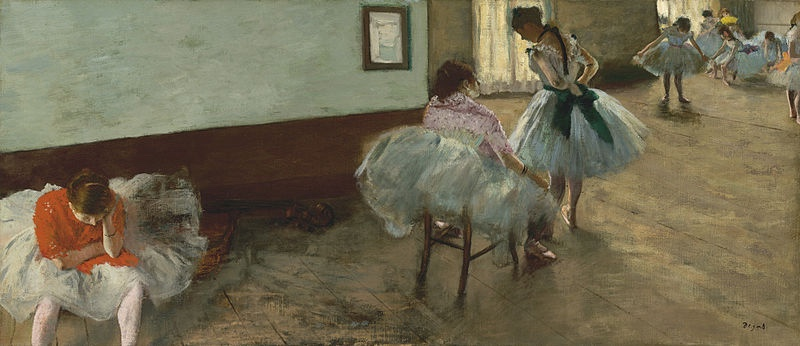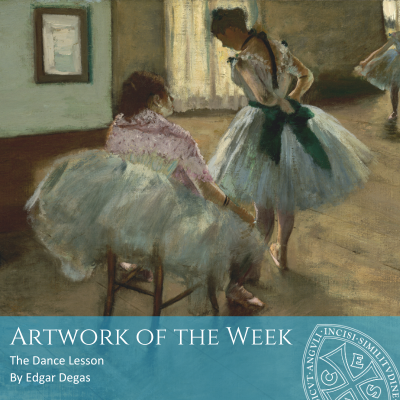Hi everyone! Welcome back to Artwork of the Week. This week, I decided to write about ‘The Dance Lesson’, painted by Edgar Degas in 1897, which now hangs on the walls of the National Gallery of Art in Washington DC in the US. The oil painting portrays Degas’ fascination with ballerinas yet this painting transcends the realm of ballet itself. Degas offers viewers a poignant glimpse into a world of artistic dedication, struggle and the pursuit of perfection. His mastery in capturing authentic unguarded moments of humanity is evocative as it unveils the raw emotions of frustration and desire that underlie the art of ballet.
The canvas presents a dance studio that seems to stretch infinitely into the distance, with a series of ballerinas caught in the throes of practice. What immediately grabs the viewer’s attention is the isolated figure seated on the left, draped in a bright orange shawl. Her posture, expressive and downturned, emits a sense of isolation, setting her apart from the pirouetting figures in the background. Her exhaustion and disconnection from the others are palpable.
In the centre of the composition, a ballerina in a pink shawl perches on a wooden chair. She faces another dancer who appears to be the teacher as she is taller and more authoritative in her stance. Degas uses the horizontal layout of the painting to narrate the scene from left to right, placing the figures off-center and at unexpected angles. This choice lends depth and a three-dimensional quality to the artwork, inviting viewers to step into the dancers’ world.
The painting conveys the harsh reality of ballet, a highly competitive and physically demanding activity. The isolated ballerina on the left stands as a symbol of every ballerina’s struggle for perfection, an emotionally charged figure that invokes sympathy from the viewer. In contrast, the background figures blur into smooth shadows, emphasising the isolation and difference of the exhausted dancer. Moreover, the fragility and vulnerability of the thin young girls swirling contrasts the emotionally charged scene on the left.
The palette of harsh colours employed for the distressed ballerina contrasts starkly with the muted tones that obscure the details of the background dancers. This deliberate choice directs the viewer’s gaze to the focal point, further accentuating the sense of isolation. In this work Degas not only explores the world of dance, but also the societal importance of ballet in France during his time. The teacher’s presence underscores the role of guidance and mentorship in the development of these young ballerinas.
Moreover, the agile movements portrayed in ‘The Dance Lesson’ symbolise youth, purity and innocence, reflecting the idealised image of ballet in French society. Degas captures the essence of this art form, revealing both its beauty and its challenges, and profoundly explores the essence of human emotions.
Gaia S, Sixth Form Art History Rep















